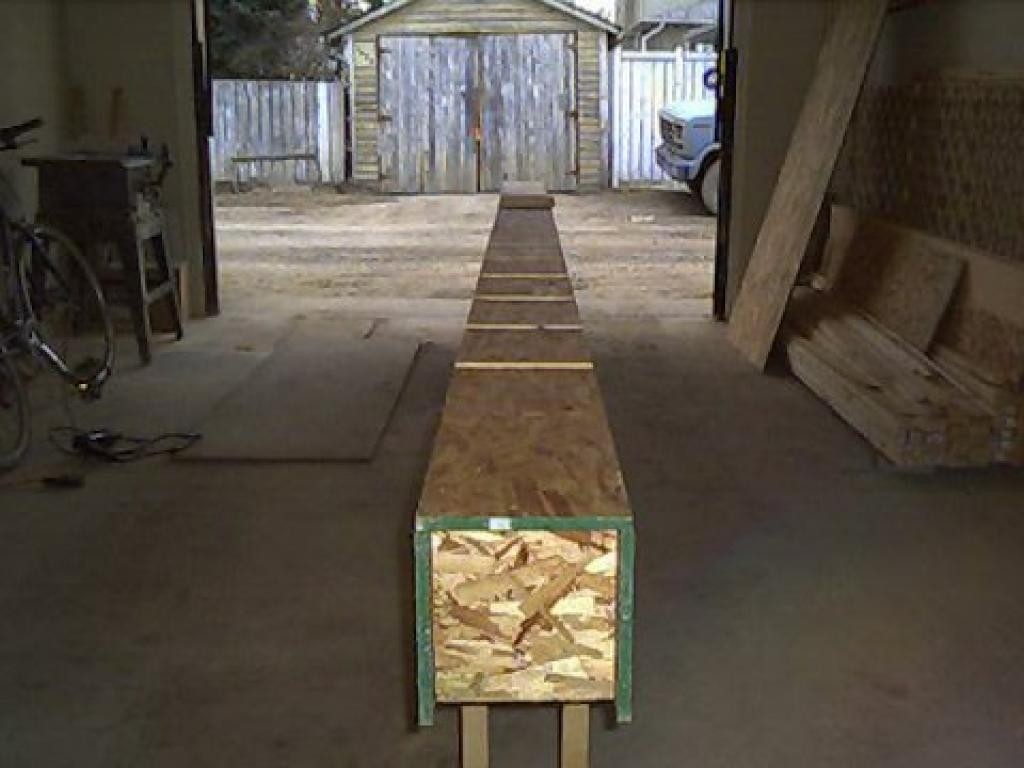|
|
LaMina WoodStrip Canoe
|
|
|
From Birchbark to PlywoodThis spring I'm starting my canoe project. Living close to the Rockies, there is not too much water around, but still enough to make this project worthwhile. It's a good Canadian tradition to build your own canoe. Over the years, this has been done by many in birchbark, wood and canvas, fiber-glass and today's most popular cedar strip with epoxy.My plans are a bit different and I like to explain here why. I like the shape and looks of the classic planked canoes with ribs. Probably because they have more rhythm than the modern smooth hulled strip epoxy canoes. And although I like the color and pattern of wood, I also think there is nothing wrong with a canoe painted in a nice bright color. Further, when you visit one of today's wood selling stores, it's tough to find a straight piece of timber. Which is a development you can fight by going to expensive specialty stores, but isn't it much more interesting to see what you can make with what's regularly available? Didn't the Indians build their canoes too with locally available materials? So, what for them was birchbark and white cedar out of the forest will for me be plywood and glue from the local home improvement store.
The goal of my project is to build a canoe with a classic design, but using modern
easily available materials and the corresponding low costs. The name of the canoe I have
already decided on, it can only be "La Mina", applicable for a laminated plywood construction.
At the same time it's a little
|
|
|
Building the Strongback Any book on canoe building shows you quickly enough that a big part of the construction time is absorbed with building the form.
Unfortunately, I don't have friends with canoe moulds in their backyard ;-). So, time to go ahead.
Cutting full sheets of chipboard is a tough job on a small hobby tablesaw, but with some inventiveness, it can be done.
Any book on canoe building shows you quickly enough that a big part of the construction time is absorbed with building the form.
Unfortunately, I don't have friends with canoe moulds in their backyard ;-). So, time to go ahead.
Cutting full sheets of chipboard is a tough job on a small hobby tablesaw, but with some inventiveness, it can be done.
Extending the little saw with large "tables" before and after helps a lot to support the sheet you are cutting. With my sawing machine, extending it was not very difficult. And it makes all the difference in handling those huge sheets. This will become helpful, when I have to cut the 3 mm plywood into strips for the hull. The strongback I'm crafting is completely "out of the book", in this case Ted Moores' book "Canoecraft". Because I intend only to build a single canoe, I use a bit thinner, but also much cheaper chipboard for my strongback and moulds. After putting the three parts together, the result has really become strong. As it should be, being a strongback. It also fills up the garage quite a bit, so the car has to leave. But I knew that beforehand.
|
|
|
Making the Moulds Starting with a good line-plan is IMHO an essential step to a successful project. In my case I bought the plan for a
"15' Bob Special"
from "Carrying Place, Canoe & Boat Works".
Using some sheets of carbon paper, the lines were transferred to the chipboard for the moulds.
Starting with a good line-plan is IMHO an essential step to a successful project. In my case I bought the plan for a
"15' Bob Special"
from "Carrying Place, Canoe & Boat Works".
Using some sheets of carbon paper, the lines were transferred to the chipboard for the moulds.
Lacking a proper bandsaw, I cut the moulds using my jigsaw. As said, one of the aims of this project is to use what is readily available. Spending more dollars on additional tools than on materials is definitely not part of the plan. After two half days of work, a nice stack of moulds is waiting to be mounted on the strongback. But first I want to laminate the inner and outer stems. The moulds for the stems are made twice as thick, by gluing on some cut-off pieces of chipboard. As usual with woodworking and especially with boat-building, you can not have enough C-clamps. As you see, I have many different types. Putting it all together, goes much faster than expected. Within a couple of hours, I suddenly can see the shape of the canoe to be. After adding a couple of battens the whole construction becomes very solid, ready for some final touches.
|
|
|
|